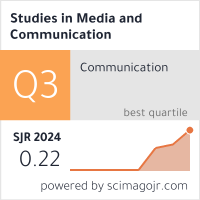The Role of Communicating Uncertainty and Information Subsidies on News Media Representation of the Female Condom’s Efficacy
Abstract
We used the framework of communicating uncertainty and information subsidies to examine the efficacy claims about the female condom Reality, regarding unplanned pregnancy and HIV/STI prevention that were made in the manufacturer’s news releases, U.S. Food and Drug Administration pre-market approval news release and in wire service stories and newspaper stories from 1992 – 1993. The efficacy claims were juxtaposed with the empirical evidence regarding the efficacy of the female condom, as well as with the U.S. Food and Drug Administration (FDA) regulations. Qualitative content analysis suggested that the FDA’s efficacy claims as compared to the manufacturer’s claims dominated newspaper and wire service stories during the time female condom received pre-market approval. A majority of the news articles did not present a balanced or an accurate picture of the female condom’s efficacy. The findings suggest the contested nature of the efficacy claims as evidenced by how they were represented in the news media. The study also highlights the challenges of communicating uncertainty about a medical device when scientists themselves seem to disagree on the manageability of the uncertainty.
Full Text:
PDFDOI: https://doi.org/10.11114/smc.v2i1.389
Refbacks
- There are currently no refbacks.
Studies in Media and Communication ISSN 2325-8071 (Print) ISSN 2325-808X (Online)
Copyright © Redfame Publishing Inc.
To make sure that you can receive messages from us, please add the 'redfame.com' domain to your e-mail 'safe list'. If you do not receive e-mail in your 'inbox', check your 'bulk mail' or 'junk mail' folders.
If you have any questions, please contact: smc@redfame.com
------------------------------------------------------------------------------------------------------------------------------------------------------

